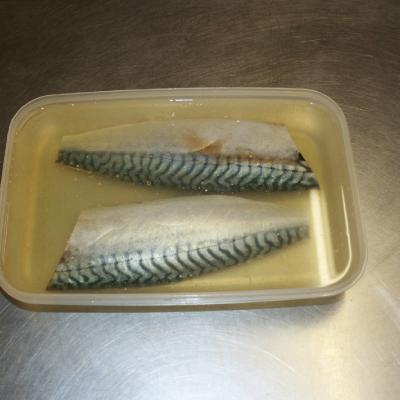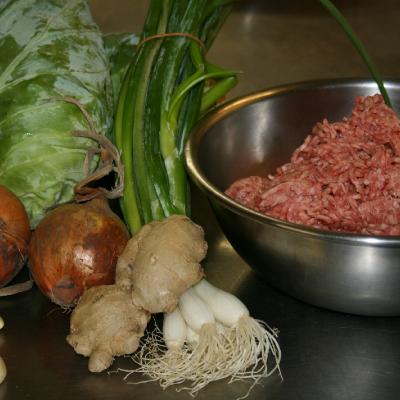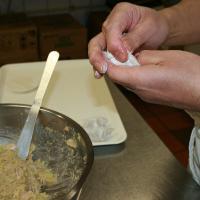Shimesaba ( Marinated Mackerel)



Mackerel is one of the most tasty fish. But its meat is very soft and consists special enzyme which makes their freshness quickly lose after the captured. To avoid this troublesome nature, it is often smoked in Netherland and in Japan we use traditional marinating technic.
First, makes mackerel as fillet, then covered with a lot of salt or soak in salted water. These days I use latter way because it is easier to give salt equally. Soaking takes about 3 hours but time depends on size of mackerel and temperature. After drain the mackerel on the basket or sheet of kitchen paper, put into the vinegar about 20 minutes. Peel off outer armor skin, take off tiny bones and ready!! But at this stage, meat is still soft and raw. Even after picking up from vinegar, marinating is still going on. Some people ( like me ) prefer lightly marinated condition ( after few hours ) but best timing is rather next day.
Gyoza






Gyoza is originally Chinese dish, but very popular in Japan too. It is available in authentic Chinese restaurant, Japanese style Chinese restaurant or gyoza specialty restaurant. Same time, gyoza is well made in home. My mother also used to make gyoza quite often and it was my favorite food. One day my mother planned to make gyoza for dinner, arranged all the ingredient then she felt very sick from a flu. So she called me and said she will quit the plan and order something by delivery. I was 7 or 8 years old that time, couldn't give up my favorite, so asked mother that can I try to make it by myself. That was my first cooking career and result was ....of course very successful !! My farther and sister couldn't believe that not only taste was perfect but so many pieces I made. And I ate a lot as usual.
Long time has past, but there is not so much difference between my first gyoza and the one we serve in the restaurant now. Choose good ingredients, use a lot of vegetables as same amount as meat, form and fold carefully one by one. Gyoza is well-balanced, healthy and tasty food.
Kampyo







Kampyo is one of the most important sushi ingredients. It is Japanese gourd; same family with calabash or big round things attached behind of Indian instrument Sitar. This heavy fruit is harvested late June, peeled and dried. For cooking, kampyo is washed in warm salted water very well, cooked in boiling water about 1 hour. Once drained, cooked again in soya sauce and sugar until almost no liquid remain in the pan.
This food contains vitamin B2, iron and a lot of dietary fiber.
In Japan, Norimaki ( sushi roll ) means Kampyo roll, if you don't mention any other name of ingredients. ( In same way " Flower " means cherry blossoms in Japan.
In old time, when fridge was not exist, sushi was not made in home but only in sushi restaurant except Kampyo roll. This roll was popular item for picnic or all kinds of event to bring. Purely the taste of Mom’s cooking.